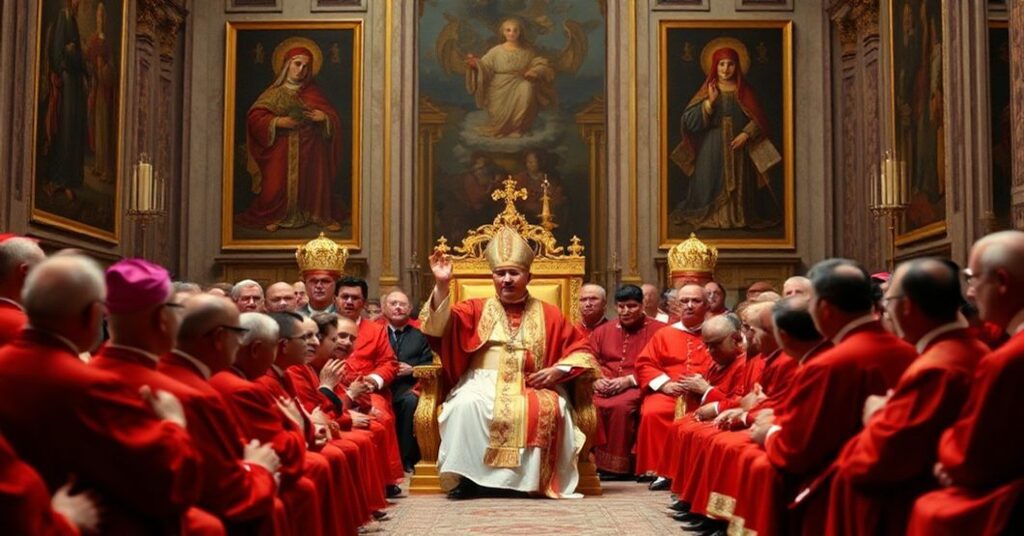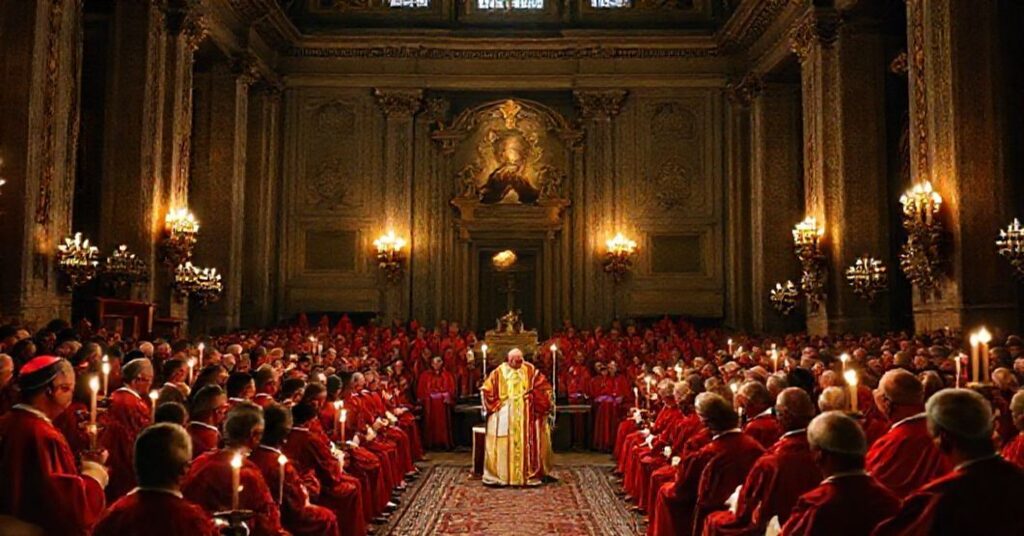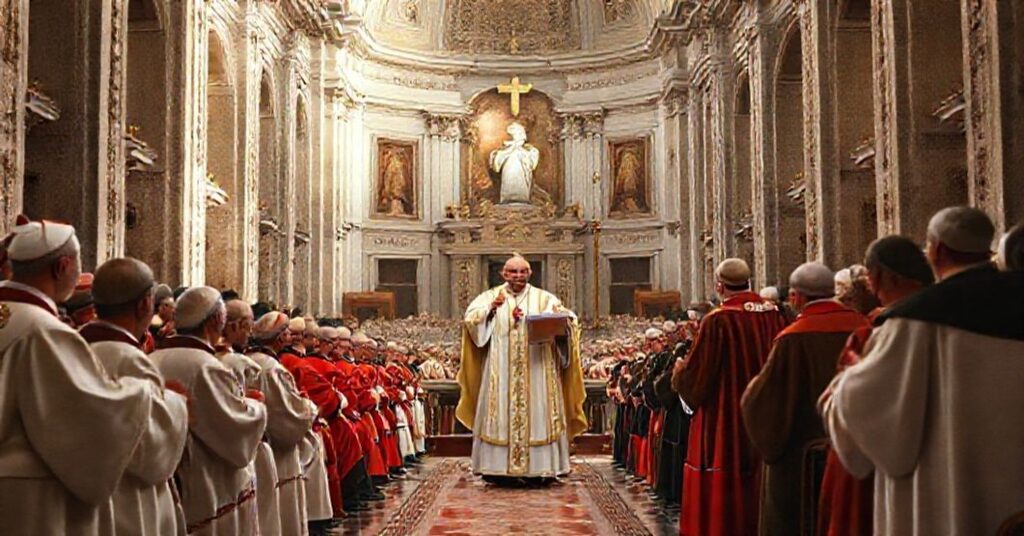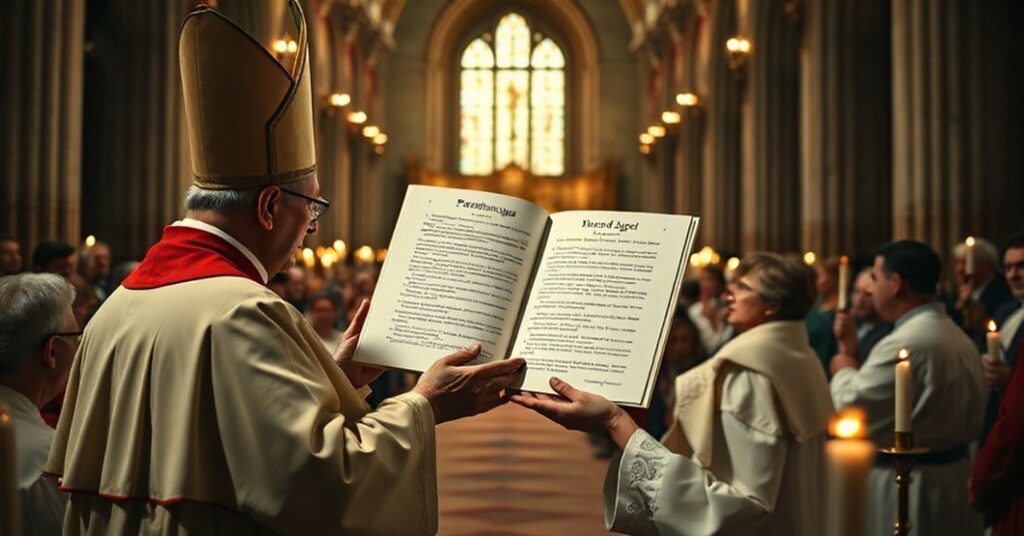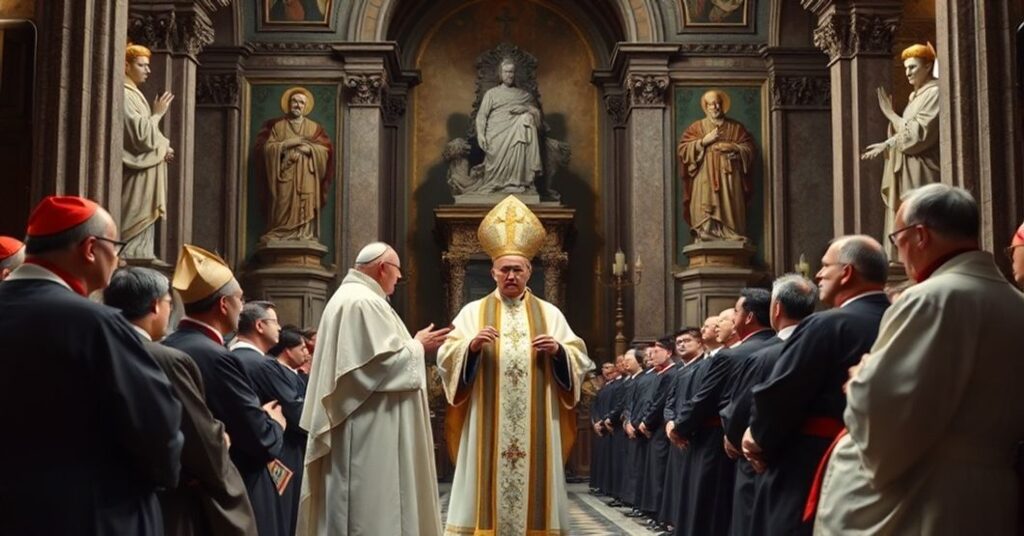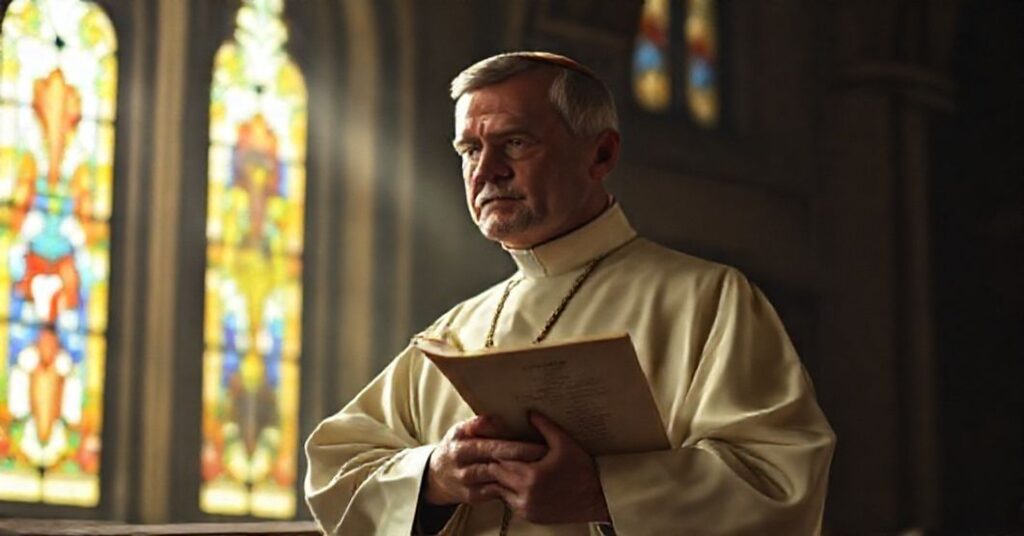Sacrum Consistorium of John XXIII (1960.05.30)
On 30 May 1960, in a semi-public consistory in the Apostolic Palace, John XXIII convened the assembled “cardinals” and “bishops” to receive their unanimous opinion on the proposed canonization of “Blessed” Juan de Ribera, Patriarch of Antioch and Archbishop of Valencia. The cited speech presents this act as the fulfillment of the “institute of the Apostolic See,” notes prior discussions in secret and public consistories, recalls the examination of virtues and miracles, and then, after soliciting and hearing the concordant votes, John XXIII declares his intention to inscribe Juan de Ribera among the saints on Trinity Sunday, 12 June 1960, in St Peter’s Basilica with great liturgical solemnity, exhorting prayers that this decision serve the glory of God and the good of the Christian people.

